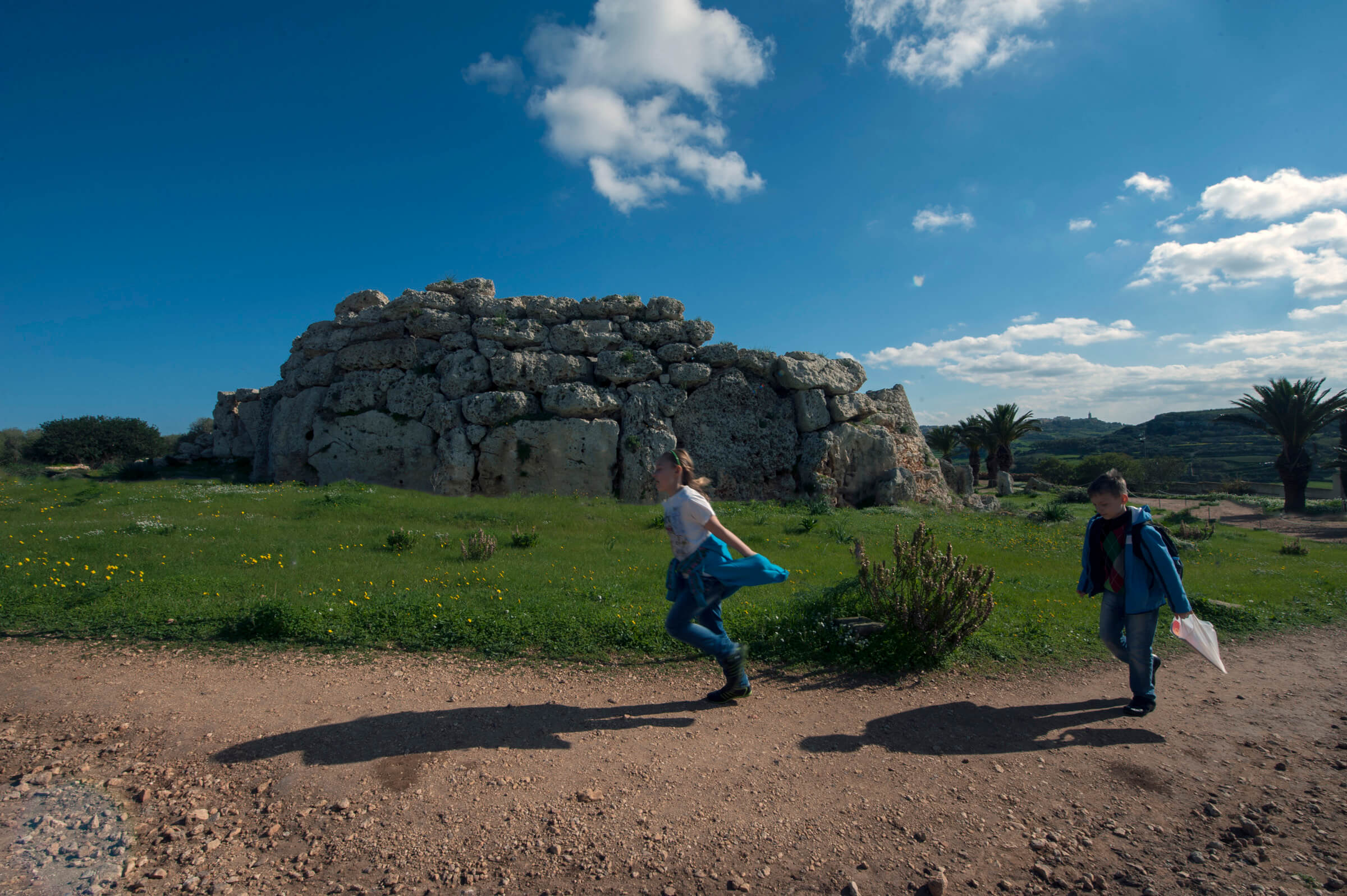The prehistoric temples of Malta and Gozo are among the oldest freestanding architectural structures in the world. Some of the temples face in similar directions. and it has been suggested that these clusters of bearing could be explained by orientations upon astronomical targets.
The most famous prehistoric temple in Gozo is the Ggantija. Its name comes from the legend that it was built by a giantess, a story that acknowledges the huge dimensions of the Ġgantija temples that make up this UNESCO World Heritage Site in Xagħra, Gozo.
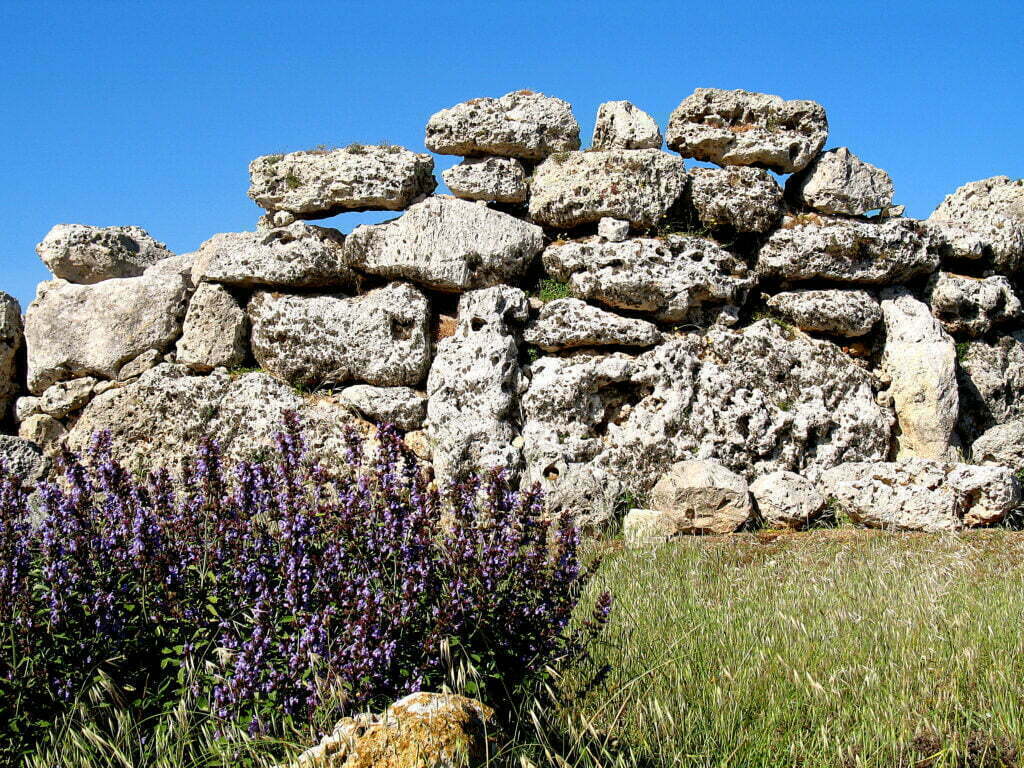
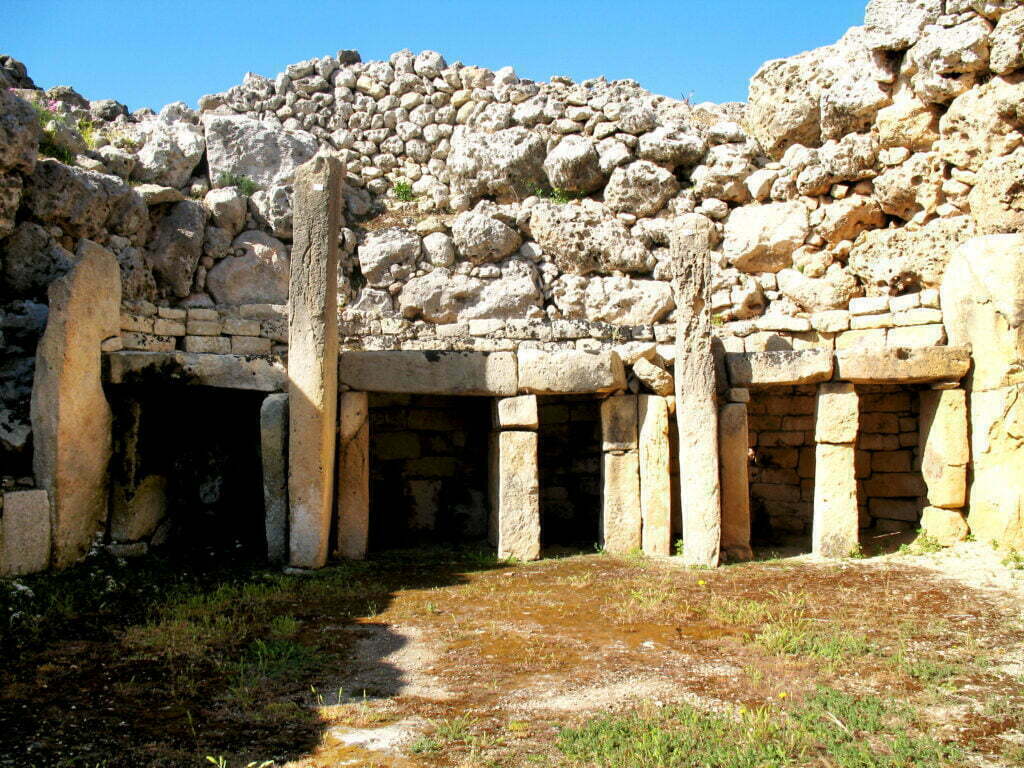
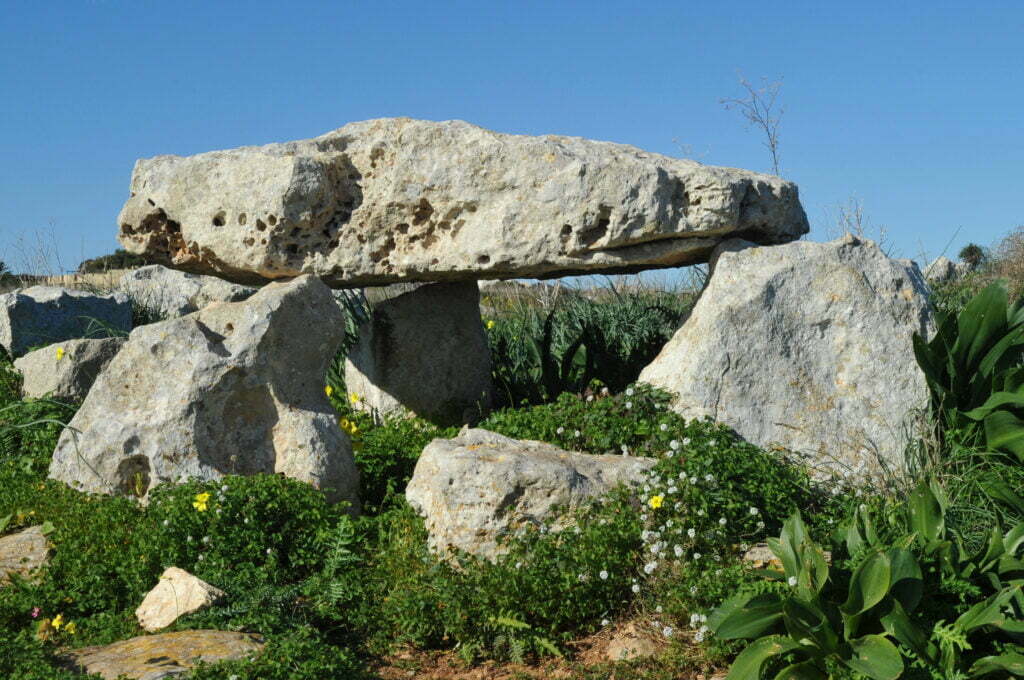
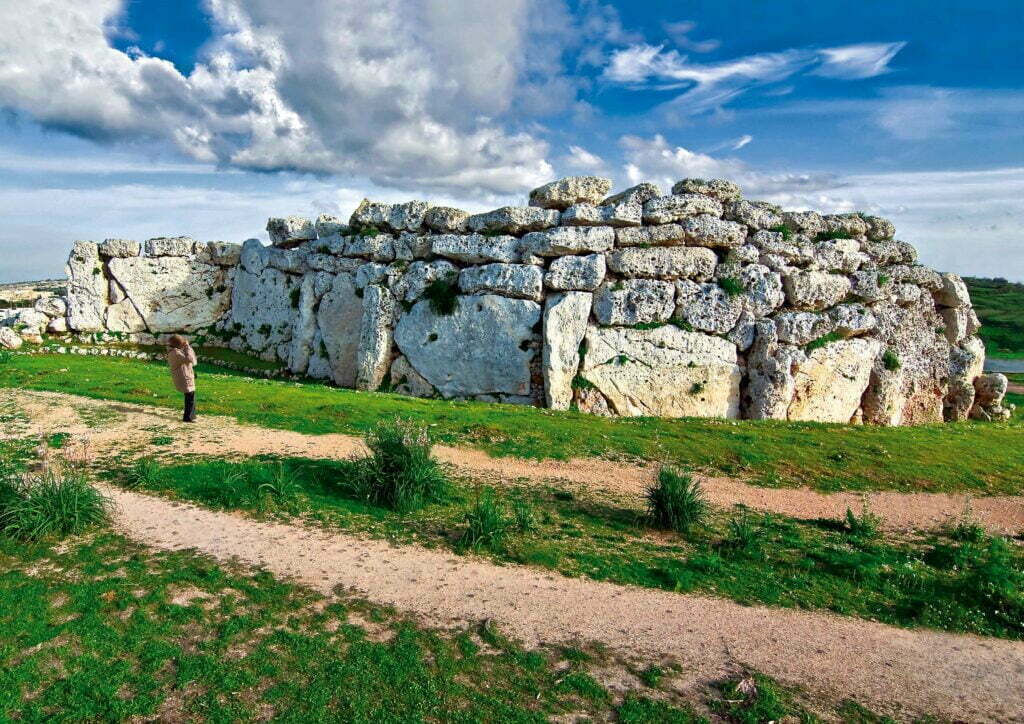
The greatest undertaking of the pre-Phoenician Gozitans are undoubtedly Ġgantija Temples (3600–3000 BC) situated in Xagħra, and documented as the oldest free-standing structure in the world. The temples take their name from the Maltese term “Ġgant” meaning “giant”, an apt name when one views the sheer size and height of these megaliths. Especially impressive are the cornerstones and the rear wall of the south temple.
The site consists of two temples contained within a single outer wall. Although sharing a common façade, each temple unit has a separate entrance. The south temple has a five apse plan and is the older of the two, as well as being the larger and better preserved. The left apse in the second pair of apses has three niches complete with capstones. Some suggest it might refer to a triple divinity, a triade. The remains of a fire-reddened circular stone hearth, possibly for an eternal flame, are in the opposite apse, where there are also remains of what was probably a small enclosure where oracles were delivered.
The north temple is considerably smaller, but with a more evolved four-apse plan, having its rear apse replaced by a shallow niche. The entrance is very similar to that of the first temple except that the threshold is narrower and shorter.
The temples have exercised many a mathematical and engineering mind seeking a solution to the mystery of how these huge stones were quarried, transported and then lifted upright in those primitive times. Local legend has it that the work was undertaken by a giantess called Sansuna, who lived on a diet of broad beans and water and carried the megaliths on her head. However, it was stone balls, which one can see strewn around the site, which probably served as rollers to transport these huge blocks of stone to the site. After the disappearance of the temple people the islands were repopulated by an entirely different race
